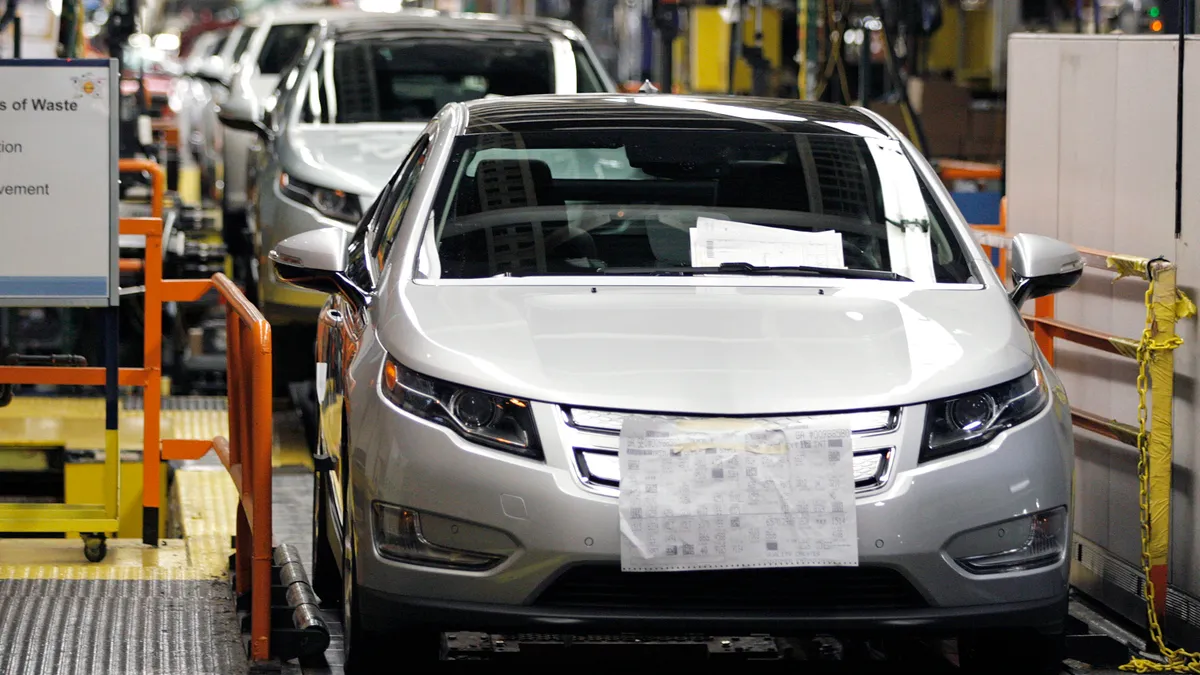Dive Brief:
- U.S. consumers purchasing new light-duty cars or trucks are increasingly considering electric vehicles, which are on pace to make up 9% of sales this year according to data from EV Hub, a tracker run by Atlas Public Policy. EVs, including plug-in hybrids, accounted for 7.3% sales in 2022.
- Combined U.S. sales of hybrid, plug-in hybrid and battery-electric vehicles reached 17.7% of new light-duty vehicle sales in the third quarter, according to the Energy Information Administration. Experts say the figure illustrates growing consumer interest in the range of benefits provided by EVs and other efficient vehicles.
- Despite a spate of news articles lamenting slower EV uptake, observers say the data may not bear out that narrative as supply chain shortages are alleviated. “I don’t see sales lagging at all,” said Joel Levin, executive director of Plug In America.
Dive Insight:
There have been hiccups in the transition to EVs — Ford, for instance, has scaled back some of its battery manufacturing plans — but overall sales continue to grow. Stories of EV inventory piling up at dealerships are “likely a very temporary phenomenon,” Levin said.
“A year ago, there was a shortage of vehicles which is now gone because supply chain issues have been resolved,” Levin said. Auto manufacturers ramped up production and the extra inventory “will soon be absorbed into the market,” he said.
Automakers in the U.S. have invested more than $210 billion to develop EV manufacturing capabilities, according to the Natural Resources Defense Council, and growing sales reflect broader international interest. EV sales in Germany, for instance, account for more than a third of new vehicle purchases, NRDC said.
In the U.S., there were roughly 136,000 EVs sold in September — a 67% year-over-year increase, according to Atlas.
“The future is clearly zero-emission, and short term declarations from car companies as they ramp up EV manufacturing should not be seen as indicative of longer term trends,” Kathy Harris, who leads NRDC’s work on clean vehicle policies, and Jordan Brinn, the group’s advocate for transportation electrification regulations, said in a joint email.
According to EIA, sales of hybrids, plug-in hybrids, and battery electric vehicles account for 15.8% of all new light-duty vehicle sales in the United States so far this year, compared with 12.3% in 2022 and 8.5% in 2021. While hybrids are more efficient in their use of gasoline, they do not offer the same benefits as all-electric vehicles.
Auto manufacturers are offering a range of new plug-in hybrids “for folks that are new to EVs and cautious about making the big leap” to a battery-only vehicle, said Levin.
But ultimately, battery-only vehicles offer the greatest environmental benefits, say experts.
“As we continue to clean up the electric grid, EVs are the only vehicles that will continue to get cleaner over time,” Harris and Brinn said. “Plug-in hybrids are also clean when used solely in electric mode, but outside of electric mode they utilize gasoline, and therefore release tailpipe emissions. Traditional hybrid vehicles are effectively efficient gasoline vehicles.”















